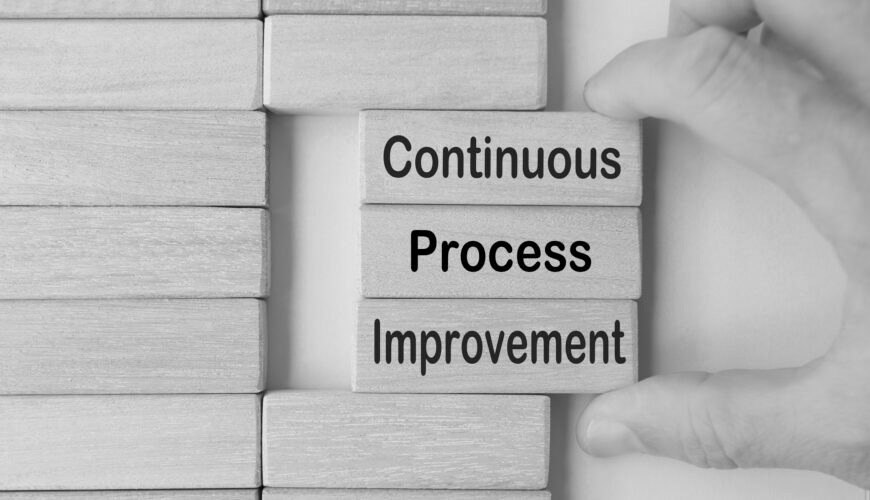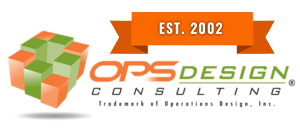Efficient and effective warehouse management is the cornerstone of supply chain success. Adopting proven methodologies to streamline operations and improve productivity is critical in a world where speed, accuracy, and cost control are paramount. Among the most impactful approaches to optimizing warehouse processes are Six Sigma, 5S, and Lean. These frameworks have revolutionized many industries, and their warehouse implementation can significantly enhance operational performance. This article explores the individual benefits, definitions, and practical applications of Six Sigma, 5S, and Lean in warehouse management and compares and contrasts the three methodologies.
What Is Six Sigma?
Six Sigma is a disciplined, data-driven approach to eliminating defects and improving processes in any business environment. Originating in the manufacturing sector, Six Sigma focuses on improving process output by identifying and removing the causes of defects and minimizing variability. Six Sigma aims to achieve a level of performance where the probability of defects is no more than 3.4 per million opportunities, referred to as “Six Sigma quality.”
Six Sigma uses a methodology called DMAIC, which stands for Define, Measure, Analyze, Improve, and Control. This structured approach helps organizations identify and optimize process inefficiencies by applying data analytics, process improvement tools, and employee collaboration.
Benefits of Six Sigma in the Warehouse
- Improved Accuracy and Consistency: By focusing on minimizing defects, Six Sigma ensures that warehouse processes such as inventory management, order picking, and shipping are performed with high accuracy and consistency. This minimizes errors and ensures customers receive the correct products at the right time.
- Data-Driven Decision Making: Six Sigma relies heavily on data to identify areas of improvement. Warehouse managers can use statistical tools and analytics to pinpoint inefficiencies and optimize processes for better performance. This data-driven approach makes decisions more objective and measurable.
- Cost Reduction: Six Sigma helps warehouses reduce costs by eliminating waste and improving process efficiency. Fewer mistakes and optimized workflows lead to less rework, fewer returns, and lower operational costs.
- Increased Employee Engagement: Six Sigma involves employees in the problem-solving process, encouraging a culture of continuous improvement. This boosts morale and gives employees the skills and tools to solve real-time problems.
What Is 5S?
5S is a lean methodology designed to organize and standardize the workplace to improve efficiency, safety, and cleanliness. “5S” refers to five Japanese words translated as Sort, Set in Order, Shine, Standardize, and Sustain. These principles focus on creating a systematic approach to organizing physical spaces, reducing waste, and fostering a culture of discipline and respect for the workplace environment.
The 5S Components
- Sort (Seiri): This step involves removing unnecessary items from the workplace. In the warehouse, this can mean discarding obsolete equipment, parts, or paperwork, ensuring that only necessary tools, supplies, and materials are on hand.
- Set in Order (Seiton): After sorting, the next step is to arrange necessary items to maximize efficiency. This involves organizing tools, products, and inventory in clearly labeled and easily accessible locations, which minimizes search time.
- Shine (Seiso): This involves cleaning the workspace and maintaining cleanliness regularly. This can include ensuring that storage areas, aisles, and equipment are clean, well-maintained, and safe for workers.
- Standardize (Seiketsu): After sorting, organizing, and cleaning, the next step is to establish standard practices for maintaining improvements. This includes creating visual guidelines, labeling systems, and checklists to ensure consistency and discipline.
- Sustain (Shitsuke): The final step is about maintaining and improving the gains made through the previous steps. This involves fostering a culture of discipline and continuous improvement, ensuring that 5S practices are temporary and ingrained in daily operations.
Benefits of 5S in the Warehouse
- Increased Efficiency: With organized workspaces, employees spend less time searching for tools, parts, or products. This reduces downtime and accelerates the overall workflow.
- Improved Safety: A clean, well-organized warehouse reduces the chances of accidents and injuries. Clear labeling, proper storage, and regular equipment maintenance all contribute to a safer work environment.
- Reduced Waste: By sorting and removing unnecessary items, 5S helps reduce clutter and waste in the warehouse, leading to more efficient use of space and resources.
- Enhanced Morale and Engagement: Employees are likelier to feel engaged and motivated when working in a clean, organized environment. A well-maintained workplace can also foster a sense of pride among workers, further enhancing productivity.
What Is Lean?
Lean is a philosophy and set of practices that aim to maximize value by minimizing waste. Initially developed by Toyota in the 1950s, It focuses on improving efficiency and reducing waste (any activity that consumes resources but doesn’t add value). It is based on continuous improvement, just-in-time inventory, and value stream mapping, which help businesses identify and eliminate non-value-added activities.
Lean identifies seven types of waste, commonly referred to as “TIMWOOD”
- Transportation: Unnecessary movement of products or materials.
- Inventory: Excess inventory that ties up space and capital.
- Motion: Unnecessary movement of people or equipment.
- Waiting: Time spent waiting for materials, information, or decisions.
- Overproduction: Producing more than what is needed.
- Overprocessing: Doing more work than necessary.
- Defects: Errors that require rework or correction.
Lean encourages companies to adopt continuous flow, pull systems, and kanban to optimize processes, reduce waste, and improve quality.
Benefits of Lean in the Warehouse
- Reduced Lead Time: Lean significantly reduces lead times in the warehouse by optimizing processes, eliminating unnecessary steps, and reducing waiting times. This allows for faster order fulfillment, shorter cycle times, and improved customer satisfaction.
- Lower Operational Costs: Lean helps to reduce inventory levels and unnecessary processes, which results in less capital tied up in stock and lower operating costs.
- Improved Product Flow: Lean focuses on streamlining processes, reducing bottlenecks, and increasing the smooth flow of products through the warehouse. This reduces congestion, minimizes delays, and improves overall warehouse throughput.
- Increased Flexibility: A Lean warehouse is highly adaptable. By reducing excess inventory and optimizing workflows, the warehouse can quickly respond to changes in demand or sudden fluctuations in order volume.
Comparing and Contrasting Six Sigma, 5S, and Lean
While Six Sigma, 5S, and Lean share similar goals of reducing waste and improving efficiency, they approach these goals differently and with distinct tools.
Focus and Scope
- Six Sigma: Primarily focused on process improvement by reducing defects and variability. It uses statistical tools and data analysis to identify the root causes of problems and standardize processes to reduce errors. Six Sigma projects are typically more data-intensive and involve deep process analysis.
- 5S: Concentrates on workplace organization and cleanliness. It focuses less on data and more on creating a well-ordered, standardized environment that facilitates productivity and safety. 5S is about creating discipline and a visual system that supports efficiency and smooth operations.
- Lean: Lean emphasizes eliminating all types of waste to maximize customer value. Lean practices focus on streamlining processes, reducing inventory, and ensuring smooth flow from start to finish. While it shares some overlap with Six Sigma and 5S, Lean’s primary goal is waste reduction across all aspects of warehouse operations.
Methodology
- Six Sigma: Follows the DMAIC approach—Define, Measure, Analyze, Improve, and Control. It involves rigorous data collection and analysis to improve processes.
- 5S: This continuous improvement methodology does not require statistical analysis. It focuses on organizing the physical space, creating standards, and maintaining improvements.
- Lean: Uses value stream mapping, pull systems, kanban, and continuous improvement to eliminate waste and improve flow. It’s focused on ensuring that every action in the warehouse adds value and reduces non-value-added activities.
Application in the Warehouse
- Six Sigma: This method can be applied to any warehouse process requiring high levels of accuracy or precision. It is particularly useful in areas like inventory control, order picking, and shipping, where small errors can lead to significant customer dissatisfaction or operational disruptions.
- 5S: This is particularly effective in creating a clean, organized, and safe warehouse environment. It is beneficial for processes requiring workers to interact with tools, materials, or machines frequently. A well-organized workspace enables workers to perform tasks more efficiently, reduces safety risks, and improves employee morale.
- Lean: Has a broad application across all aspects of the warehouse, from inventory management to order fulfillment. Lean practices are especially effective in high-volume environments, where reducing lead times and waste is critical for meeting customer demands and improving throughput.
Integrating Six Sigma, 5S, and Lean disciplines into warehouse operations offers a comprehensive approach to process improvement. Each methodology brings its unique strengths to the table:
- Six Sigma delivers data-driven, precision-focused results that minimize defects and variability in warehouse processes.
- 5S creates a disciplined, organized, and clean environment that enhances safety and efficiency, making it easier to implement other methodologies.
- Lean provides a holistic approach to waste reduction, streamlining the flow of goods and optimizing the overall warehouse system.
When implemented together, these methodologies create a powerful synergy that drives continuous improvement, reduces costs, enhances safety, and improves customer satisfaction. Warehouse managers who embrace Six Sigma, 5S, and Lean can transform their operations into more agile, efficient, and competitive systems capable of meeting the demands of today’s fast-paced logistics environment.


